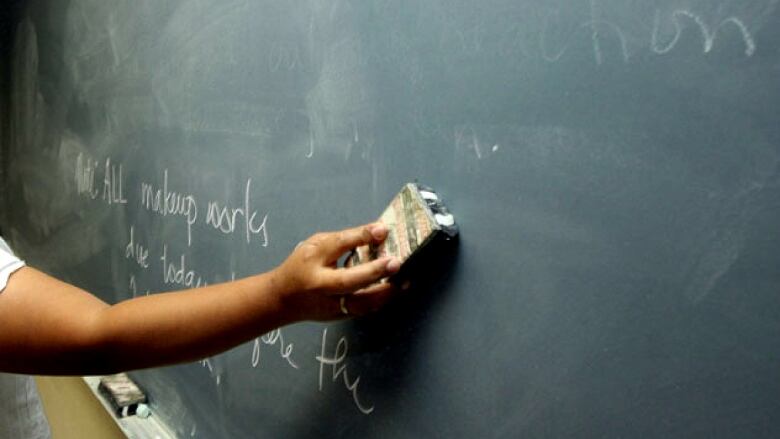Violence against teachers by students is turning into a bona fide workplace hazard
According to one survey, 60 per cent of teachers have personally experienced violence on the job

It was once considered a highly remote risk. But now, incidents of violence by students against teachers has exploded into a bona fide workplace hazard, one that my profession seems to be witnessing and worse, tolerating with alarming frequency.
Just how often it is happening?
A survey by my provincial union, the Ontario English Catholic Teachers Association, found that 60 per cent of teachers (both elementary and secondary) have personally experienced violence on the job.
A disturbing 70 per cent of teachers (myself included) have witnessed acts of violence in the school. Weapons were involved in 15 per cent of these attacks, whichincluded classroom objects (76 per cent) and knives (22 per cent).
Public taking notice
Thankfully, there is growing awareness that this is happening, though it often takes an extreme example such as that of an Ottawa teacher left with a shattered hip after a violent encounter to capture mainstream attention. And while I take some comfort in the fact that people are starting to take notice, there is another dimension to the problem here one that my fellow teachers need to both take ownership of and work to tackle as part of our defensive strategy against violence.
That is: way too many teachers show an endemic reluctance to report and follow up on incidents of violence and harassment that they are made to endure. Compounding the problem is that many principals end up encouraging teachers who do come forward to "let it go" or "forgive."According to the aforementioned survey, nearly 25 per cent of teachers who experienced violence were told not to report the incident to police. Even worse, teachers are sometimes made to feel that they might have brought it on themselves.
Educators have an absolute duty to document and report violent incidents in the school. But when it comes to violence by students against teachers, the demand for justice seems to enter a moral maze of rationalizing guilt and uncertainty.
The principal who might respond with pathological zeal to any form of attack or harassment against a student will often hesitate and mitigate when a student attacks a teacher. That's because actively supporting and protecting the teacher could mean an ongoing legal problem for the principal. It seems today's principals would rather leave the problem in the teachers' hands, even if that means they suffer in silence. Indeed, the disciplinary brick wall that was once the principal's office is now not much more than a speed bump.
But while administrators deserve some of the blame, there is also the absurdly illogical sense of sacrifice, submission and self-guilt that way too many teachers feel when they experience violence in the classroom.
Reluctance to report
Certainly no teacher would fail to call the police or press charges should he or she be on the receiving end of a violent encounter with a child or teen anywhere outside of the school. But place that same encounter within the confines of the school, and many of the same teachersbecome fearful and reluctant to report the incident.
The excuses are many, but some of the most common ones I have heard include knowledge or hearsay that the student is going through a difficult time at home. Another consideration that seems to give violent students de-facto immunity is a diagnosis of alearning disabilitysuch as oppositional defiance disorderor attention deficit and hyperactivity disorder. Finally, some teachers worry that by pressing charges and reporting the incident to police, they will somehow ruin all possible chances for the student's future success at college or university.
In a statement on violence in the classroom, the British Columbia Teachers Federation affirmed that "often teachers are reluctant to assert their rights to work in a safe environment" and that "those who teach violent young students are embarrassed to admit that five and six year olds have hurt them."

Whatever the excuse or mitigating circumstances, in the end the only real reason why this form of violence is still being tolerated is because teachers end up prioritizing a violent student's interests and needs above the teacher'sown physical well-being.
That should stop. We can't teach and preach ad nauseam about the need to eradicate domestic violence around the world, for example, yet rationalize and tolerate teachers in their own workplace being kicked, shoved, bitten and punched by students.
Teachers must demand that all levels of school administration right up to our respective ministers of education guarantee, without exception, excuse or mitigation, our right to a safe workplace.
If we truly believe that our working conditions are the students learning conditions, then we should demand no less.
This column is part ofCBC'sOpinion section.For more information about this section, please read thiseditor'sblogandourFAQ.












_(720p).jpg)


 OFFICIAL HD MUSIC VIDEO.jpg)
.jpg)



























































































